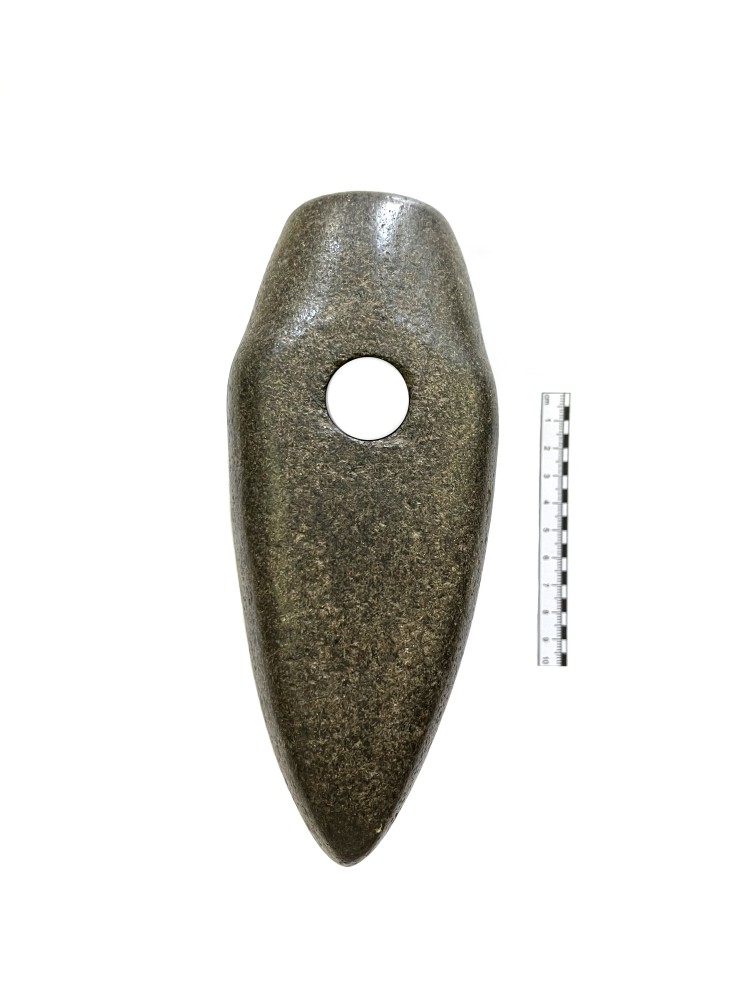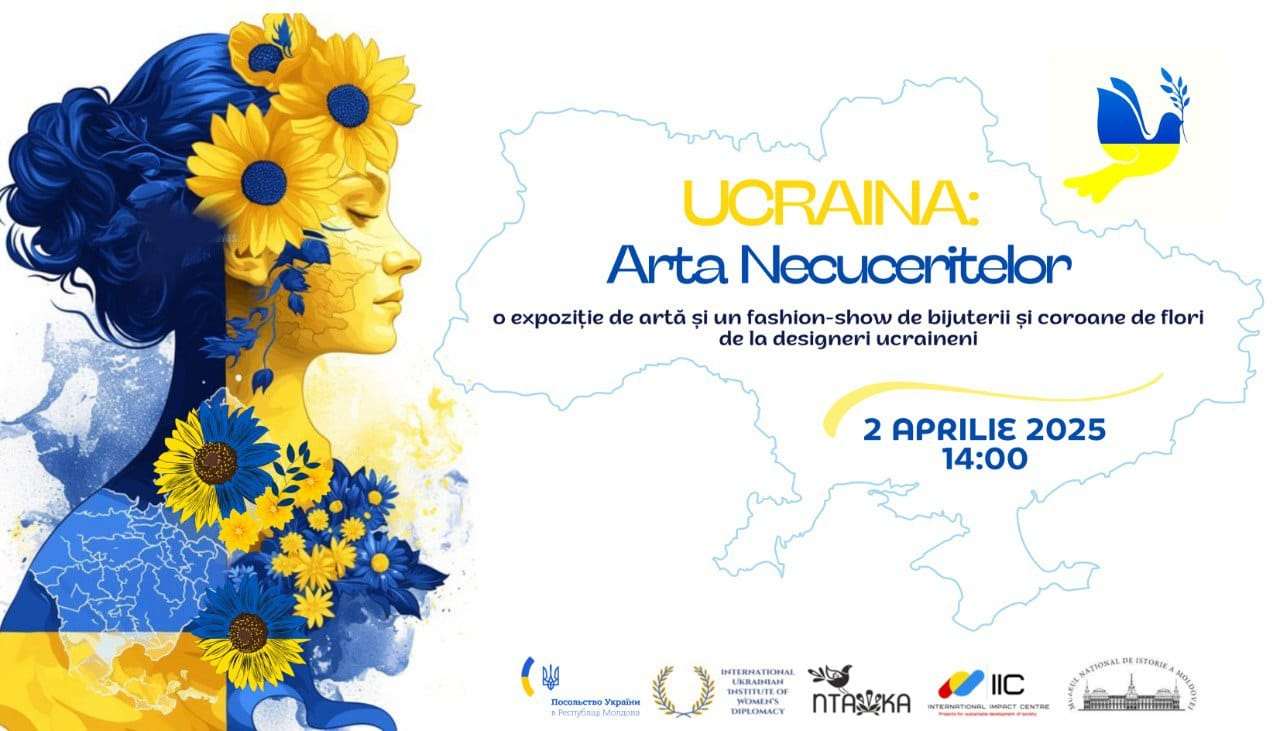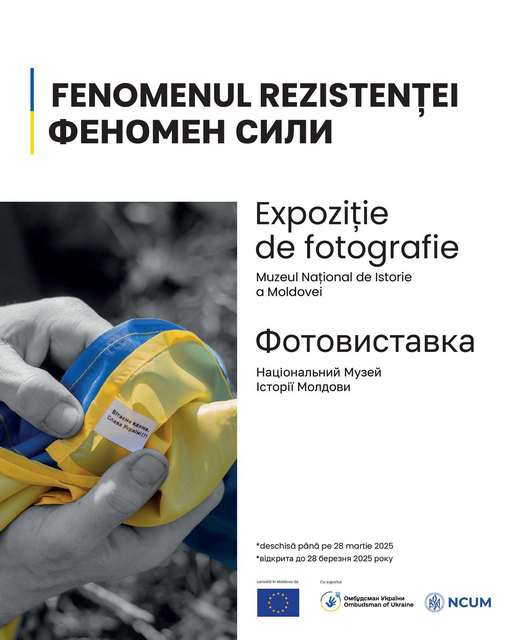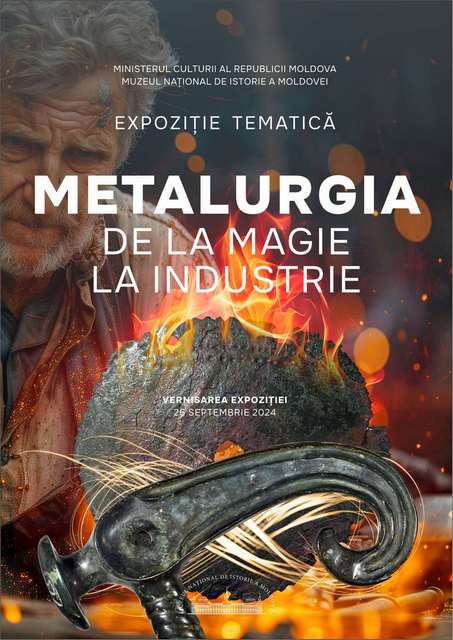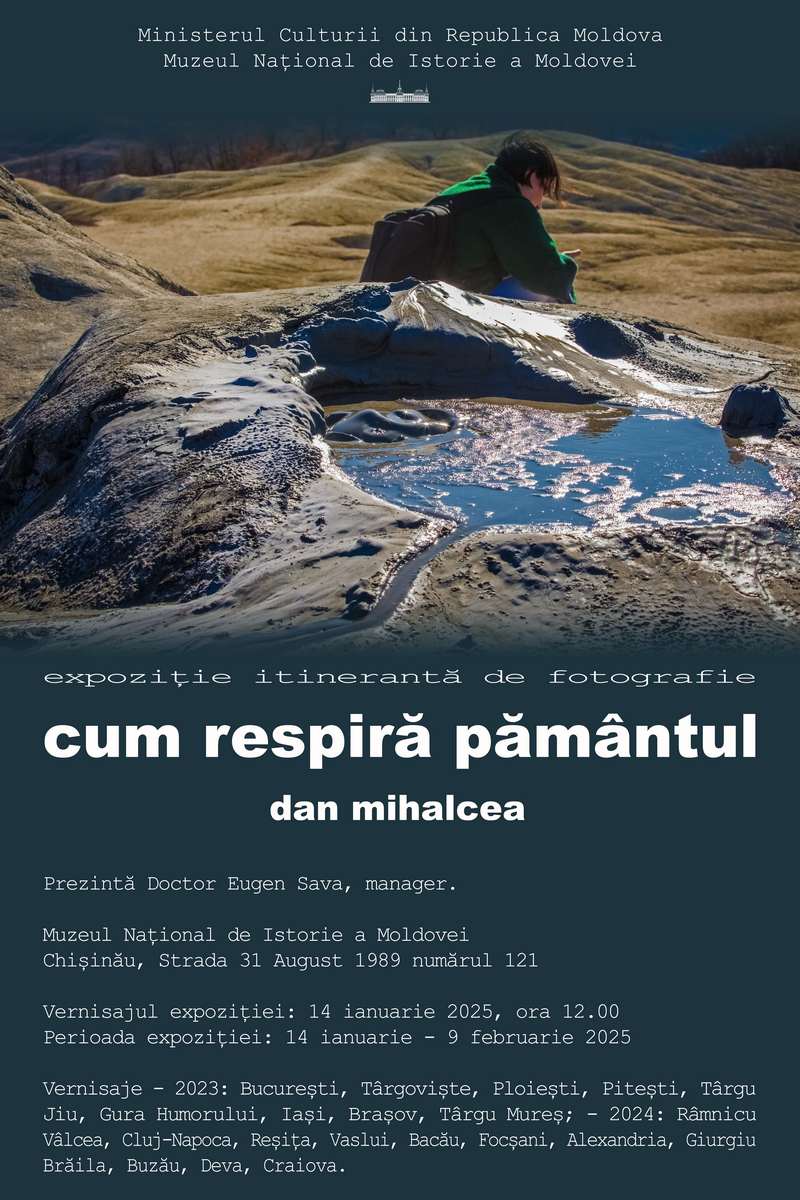
On January 14, 2025, starting at 12:00 PM, the National Museum of History of Moldova will host the 22nd opening of the traveling photography exhibition How the Earth Breathes, created by director and photographer Dan Mihalcea.
How the Earth Breathes is a traveling artistic project with three objectives: to highlight a contemporary artistic work, to showcase a part of Romania's natural heritage, and to raise awareness about environmental pollution caused by materials that may negatively affect the natural function of ecosystems.
The exhibition How the Earth Breathes consists of 20 photographs taken by director Dan Mihalcea at the Mud Volcanoes of Pâclele Mici in Buzău County, Romania.
The exhibition was initially presented in Romania from April 2023 to December 2024, touring major cities in Romania and prestigious cultural institutions each month. From January 2025, it will be displayed outside Romania's borders.
Dan Mihalcea is based in Bucharest and was born in Râmnicu Vâlcea. He is a film and television director, director of photography, and artist photographer. He graduated from the Faculty of Arts at Hyperion University in Bucharest, specializing in Film and Television Direction. He earned a Master's degree in Cinematography and Media, with a focus on Cinematic Drama and Screenwriting, from the same university. He completed his doctoral studies in Cinematography and Media at the Faculty of Theatre and Film at Babeș-Bolyai University in Cluj-Napoca. Since 1995, Dan Mihalcea has worked in various artistic programs and held multiple positions in the television industry and beyond: artistic director, editor, director of photography, camera operator, documentary filmmaker, and product, catalog, and event photographer.
Dan Mihalcea is a laureate at both international and national documentary film festivals held in Romania. He is the author of the works featured in the traveling religious photography exhibition Canonicon, which was displayed in 12 cities across Romania from 2012 to 2014 at art galleries, museums of art and history, county libraries, and cultural centers. In Bucharest, the exhibition was presented at the Romanian Cultural Institute in 2014.
The exhibition How the Earth Breathes will be open to the public from January 14 to February 9, 2025, in Hall 1 at the National Museum of History of Moldova, Chișinău, 31 August 1989 Street, 121 A.
 31 August 1989 St., 121 A, MD 2012, Chisinau, Republic of Moldova
31 August 1989 St., 121 A, MD 2012, Chisinau, Republic of Moldova



